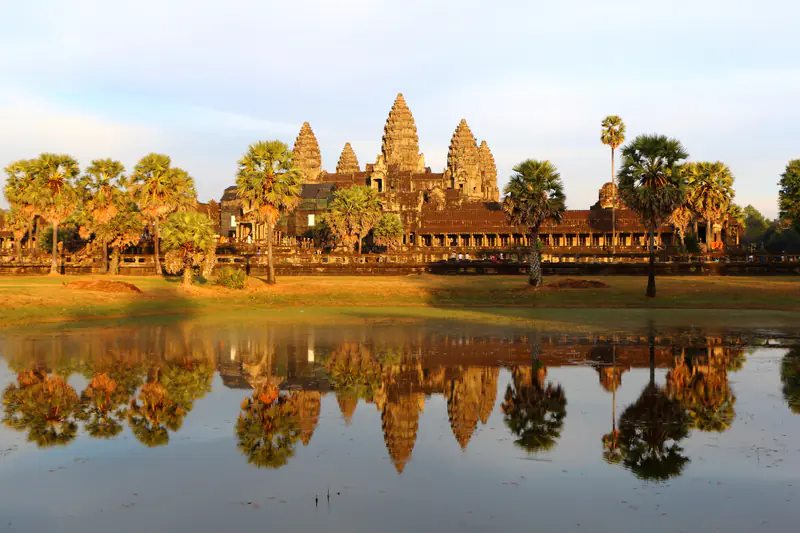UNESCO World Heritage Sites in Cambodia
Heritage Overview
Cambodia's UNESCO World Heritage sites represent the extraordinary achievements of the Khmer Empire, one of Southeast Asia's most powerful civilisations, alongside exceptional natural forests preserving critical biodiversity. The country's heritage encompasses monumental religious architecture, sophisticated urban planning, and pristine ecosystems that together illustrate centuries of cultural development and environmental significance. The architectural and archaeological legacy demonstrates remarkable engineering capabilities, artistic sophistication, and the religious synthesis between Hinduism and Buddhism that defined Khmer culture. Massive temple complexes showcase intricate stone carving, innovative hydraulic systems, and urban designs supporting large populations. These sites preserve Sanskrit inscriptions, detailed bas-reliefs depicting mythology and daily life, and architectural evolution across multiple centuries. Natural heritage sites protect critical rainforest ecosystems within the Indo-Burma biodiversity hotspot, safeguarding endangered species and demonstrating successful conservation approaches. These forests represent some of Southeast Asia's last intact lowland evergreen forests, providing essential habitats for threatened wildlife. Together, Cambodia's heritage sites reflect the pinnacle of Khmer architectural and artistic achievement, the empire's religious and cultural complexity, and ongoing conservation efforts protecting exceptional natural environments essential for regional biodiversity.
Essential Information
Visa Requirements
Most foreign visitors can obtain visas on arrival at international airports and land borders, or apply for e-visas online before travel. Tourist visas cost USD 30 (on arrival) or USD 36 (e-visa), valid for 30 days with single entry. E-visas require online application three business days before arrival and are valid at most border crossings. ASEAN citizens receive visa exemptions. Business visas allow extensions and multiple entries. Bring passport photos for arrival visas. Passports must be valid for six months beyond entry. Overstaying carries daily fines. Extensions available in Phnom Penh and Siem Reap.
Currency
The official currency is the Cambodian Riel (KHR), but US Dollars are widely used, creating a dual currency system. Most transactions accept both currencies, with change sometimes given mixed. ATMs dispense US dollars, available in cities and tourist areas. Credit cards (Visa, Mastercard) are accepted in hotels, restaurants, and tourist establishments but less common elsewhere. Cash remains essential for markets, street food, tuk-tuks, and rural areas. Small US dollar denominations are most practical. Riel suits purchases under one dollar. Exchange rates fluctuate around 4,000 riel per dollar. Bring sufficient cash for remote areas.
Language
The official language is Khmer, spoken by nearly all Cambodians and written in the distinctive Khmer script derived from ancient Indian alphabets. English proficiency is increasing rapidly, particularly amongst younger generations, tourism professionals, and in cities like Phnom Penh and Siem Reap. French, once widely spoken during colonial times, is declining but occasionally used by older generations. Chinese is increasingly common in business contexts. Tourist areas have good English support with signage, menus, and guides commonly available in English. Learning basic Khmer phrases (Sok sabai for hello, or kohn for thank you) is warmly appreciated and facilitates positive interactions.
Climate
Cambodia experiences a tropical monsoon climate with two distinct seasons. The wet season (May-October) brings heavy afternoon rainfall, high humidity, and temperatures around 25-35°C, with September and October seeing peak precipitation. The dry season (November-April) offers sunny weather with minimal rainfall, divided into cool (November-February) and hot (March-April) periods. Cool season temperatures range 20-30°C, ideal for tourism. The hot season sees temperatures exceeding 35-40°C with intense heat before monsoon rains. The best visiting period is November through February, offering comfortable temperatures, low humidity, and minimal rainfall whilst countryside remains green. Dry season facilitates easier travel to remote temple sites.
